10 Common Business Problems Solved with Joget Workflows
Date
Oct 04, 25
Reading Time
7 Minutes
Category
Low-Code/No-Code Development
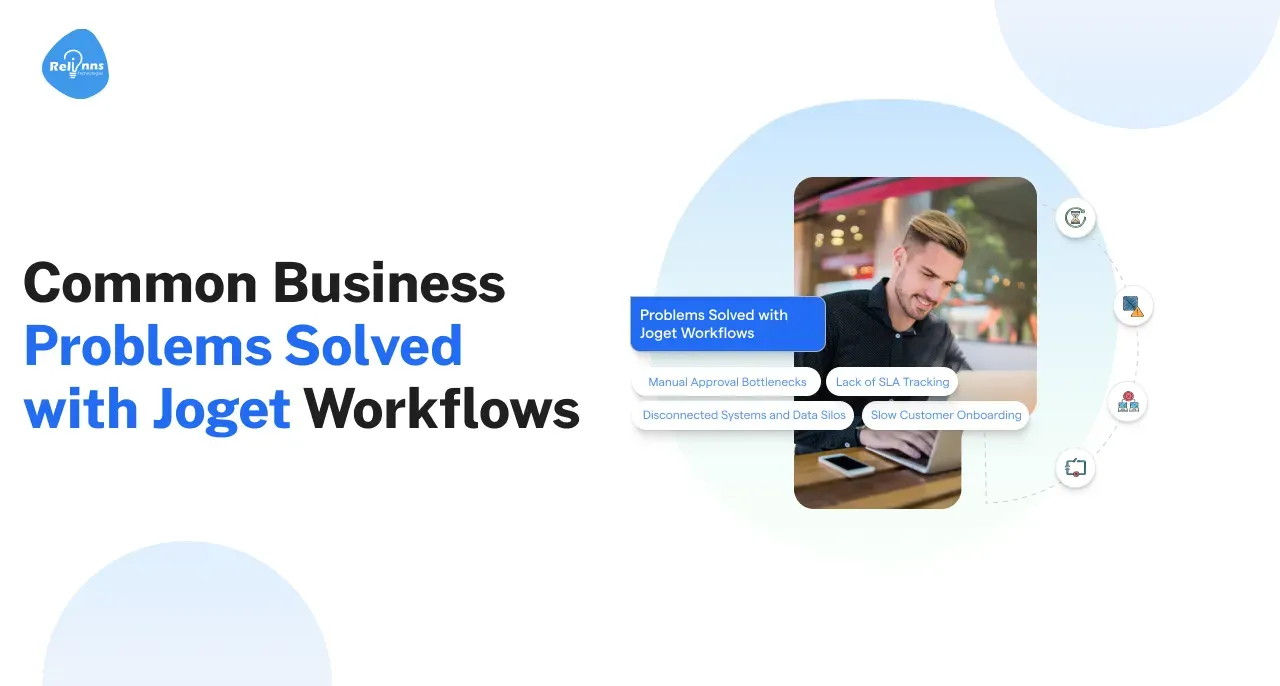
Businesses today face constant pressure to do more with less, achieve faster approvals, deliver happier customers, ensure better compliance, and lower costs.
Unfortunately, most organizations are still weighed down by manual processes, disconnected tools, and slow response times.
These challenges hurt productivity, frustrate employees, and reduce customer satisfaction. The result is delayed decision-making and higher operational expenses.
In this blog, we break down 10 of the most common business problems and explain in detail how Joget workflows solve them, along with best practices to ensure long-term success.
10 Common Business Problems Solved with Joget Workflows
1. Manual Approval Bottlenecks
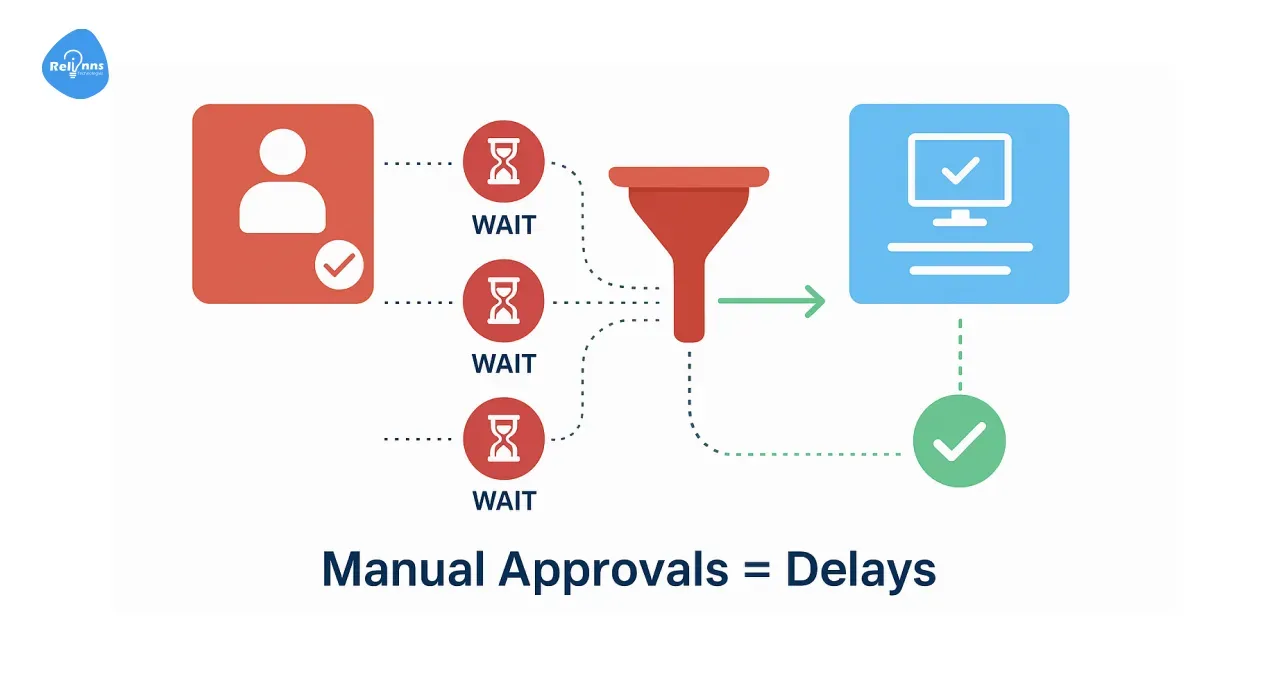
The Problem:
Many organizations still rely on emails, spreadsheets, or paper forms to handle approvals for leave requests, vendor payments, budget sign-offs, or policy changes. These manual approvals often get lost in inboxes, sit idle for days, or require repeated follow-ups.
This leads to frustrated employees, missed deadlines, and, in regulated industries such as banking or insurance, compliance risks due to delayed or incomplete approvals.
How Joget Solves It:
Joget’s automated approval workflows route requests instantly to the right person based on predefined business rules. SLA timers track each step, while automated reminders and escalation alerts ensure managers respond on time. Approvals can be made directly on desktops or mobile devices.
Example:
An HR department using Joget for leave approvals reduced turnaround from three days to just a few hours.
Impact:
- Fewer delays in approvals
- Better visibility for requesters
- Higher employee satisfaction and compliance
2. Lack of SLA Tracking
The Problem:
Without proper Service Level Agreement (SLA) tracking, teams often miss deadlines. Managers only learn of the delay after customers complain or penalties are triggered.
This is especially harmful in industries like financial services, where meeting SLAs is tied to customer trust and regulatory obligations.
How Joget Solves It:
Joget’s workflows come with SLA monitoring features that automatically track deadlines and progress.
- Reminders notify team members before deadlines.
- Escalations alert supervisors if tasks are delayed.
- Managers have access to real-time dashboards, enabling them to intervene early.
Example:
A claims-processing team in an insurance company reduced SLA breaches by 40 percent within six months of adopting Joget’s automated SLA tracking.
Impact:
- Higher SLA compliance rates
- Fewer customer complaints
- Improved brand reputation
3. Compliance Gaps in Regulated Industries
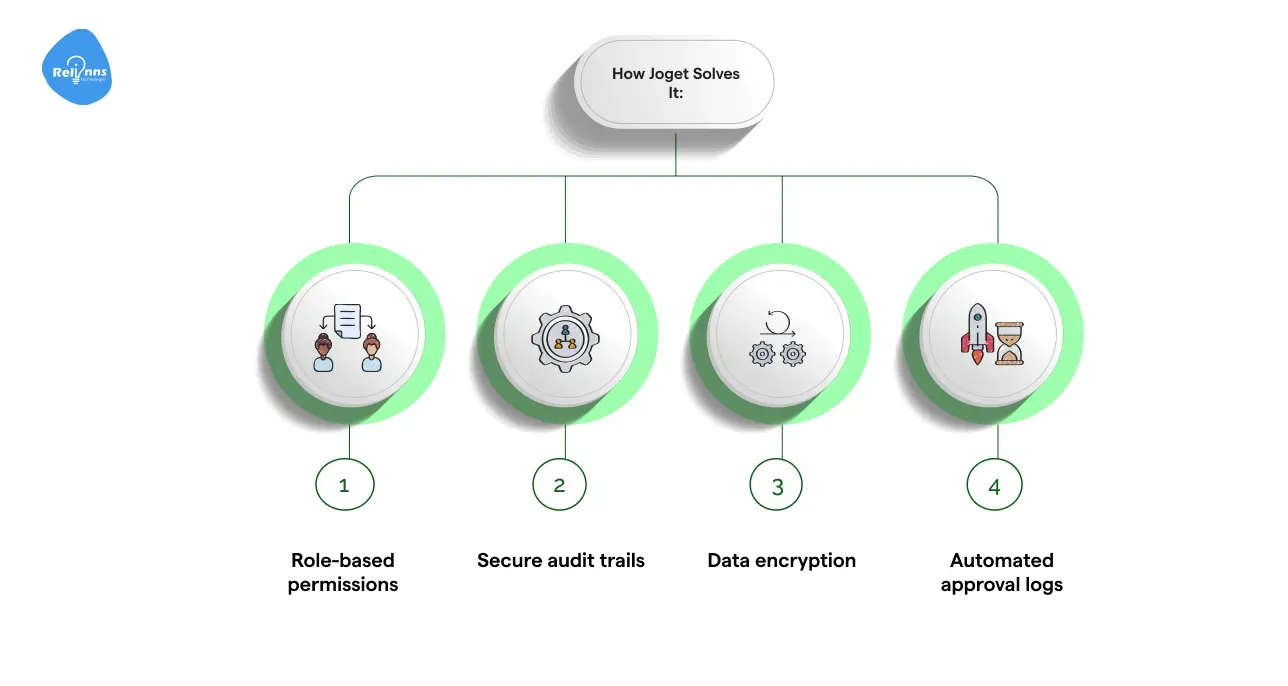
The Problem:
Healthcare, insurance, and financial institutions must adhere to strict regulations such as KYC, AML, GDPR, or HIPAA. Manual record-keeping often leaves gaps, creating risks of audit failures, penalties, and reputational damage.
How Joget Solves It:
Joget provides end-to-end compliance support:
- Role-based permissions to control data access
- Secure audit trails recording every action taken
- Data encryption to protect sensitive information
- Automated approval logs for easy audit reporting
Example:
A healthcare provider used Joget to automate patient record approvals, cutting compliance audit preparation time from two weeks to two days.
Impact:
- Reduced audit preparation effort
- Lowered risk of compliance breaches
- Increased trust among regulators and customers
4. Disconnected Systems and Data Silos
The Problem:
Businesses often use separate CRMs, ERPs, HR software, and legacy databases that do not communicate with each other. Employees end up duplicating data entry and wasting time switching between platforms to gather information.
How Joget Solves It:
Joget’s API Connector Builder seamlessly integrates workflows across multiple platforms. This unifies data flow, allowing real-time information sharing between systems and departments.
Example:
A manufacturing company integrated Joget with both its ERP and CRM to create a unified order-approval workflow, eliminating duplicate entries and reducing errors by 30 percent.
Impact:
- One source of truth for all data
- Faster decision-making due to connected systems
- Improved productivity and fewer human errors
5. Slow Customer Onboarding
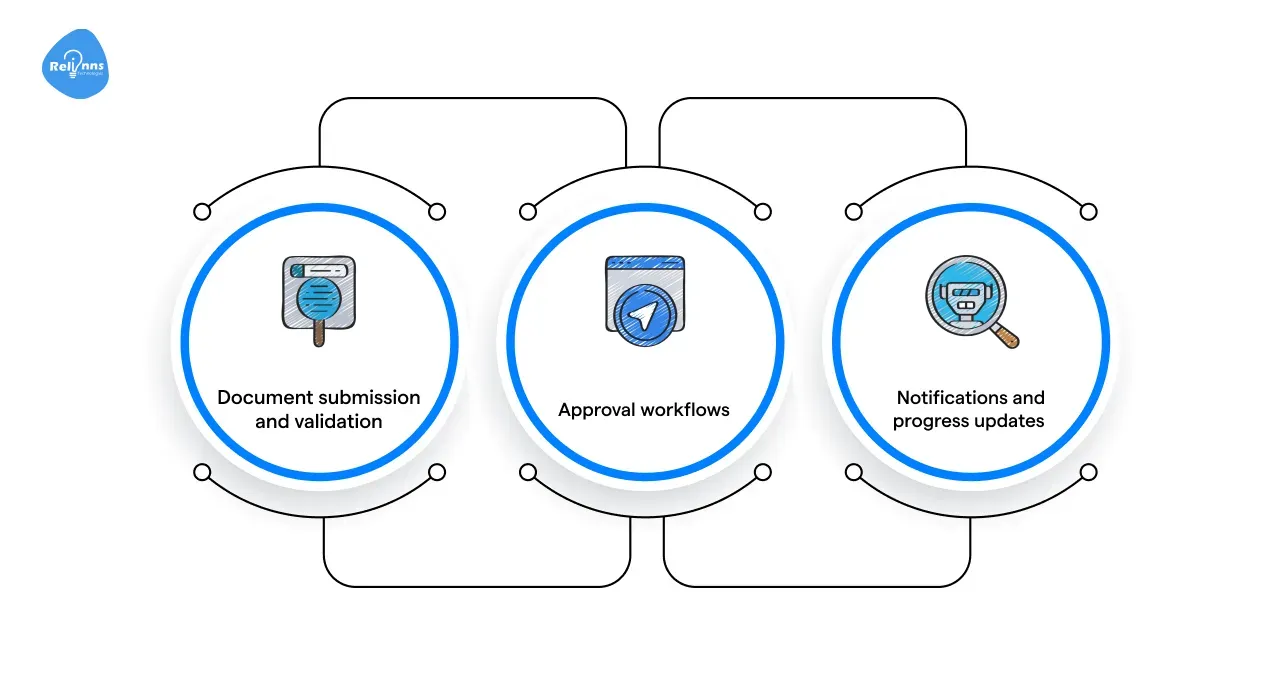
The Problem:
Customer onboarding typically involves multiple steps, including document collection, background checks, approvals from various departments, and manual data entry. This creates unnecessary delays and frustrates new clients.
How Joget Solves It:
Joget streamlines onboarding by:
- Automating document submission and validation
- Triggering approval workflows across departments
- Sending notifications and progress updates to customers
Example:
A fintech startup automated customer onboarding with Joget, reducing the average time from 10 days to 48 hours.
Impact:
- Faster onboarding improves customer experience
- Fewer errors in data collection
- Reduced administrative workload for staff
Suggested Reading: Types of Low Code Digital Onboarding Solutions for Banks
6. Inefficient Document Management
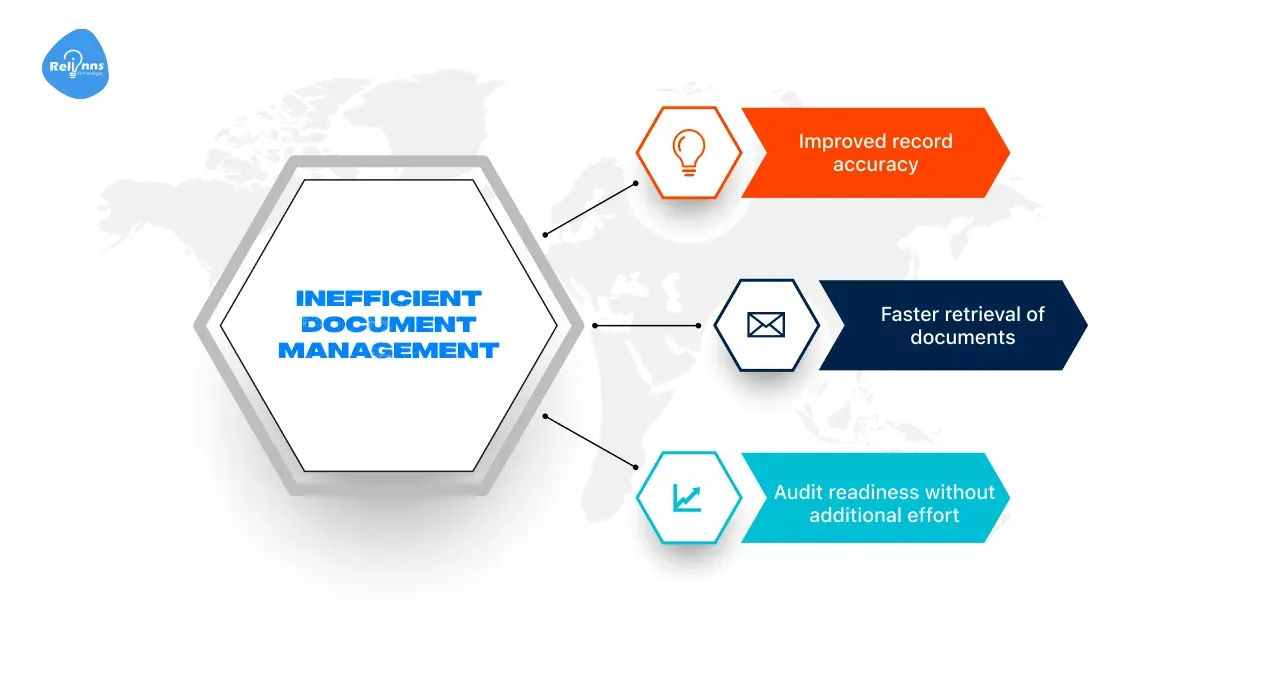
The Problem:
Paper-heavy processes and scattered digital files often result in missing documents, version control issues, and compliance risks. Staff waste hours searching for the right document.
How Joget Solves It:
Joget allows all documents to be stored within workflows and linked to their corresponding process steps. Each record is searchable, secure, and ready for audits.
Example:
A logistics firm digitized its delivery documentation using Joget, resulting in a 70 percent reduction in record search times.
Impact:
- Improved record accuracy
- Faster retrieval of documents
- Audit readiness without additional effort
7. Poor Visibility into Process Performance
The Problem:
Managers often struggle to identify where delays occur because traditional reporting tools often provide outdated or incomplete data. Without real-time insights, fixing bottlenecks becomes a reactive rather than proactive process.
How Joget Solves It:
Joget’s dashboards and datalists give live visibility into:
- Pending approvals
- SLA compliance metrics
- Team performance and bottlenecks
Example:
An operations team using Joget reduced decision-making delays by 25 percent after implementing live dashboards.
Impact:
- Better decision-making with real-time data
- Faster intervention to resolve bottlenecks
- Consistent operational performance
8. Resource Allocation Challenges
The Problem:
During peak periods, managers often struggle to balance workloads without knowing who is overloaded or underutilized. This leads to delays and staff burnout.
How Joget Solves It:
Joget workflows offer real-time task visibility, enabling managers to:
- See workloads for each employee
- Reassign pending tasks instantly to available staff
- Maintain service levels even during spikes in demand
Example:
An e-commerce company automated its order-handling process and redistributed workloads during seasonal spikes, resulting in a 30 percent improvement in turnaround time.
Impact:
- Balanced workloads reduce employee burnout
- Consistent service quality
- Increased team productivity
9. High Costs of Manual Operations
The Problem:
Manual, repetitive tasks such as approvals, data entry, and status updates consume valuable staff hours and inflate operational costs.
How Joget Solves It:
Joget automates repetitive steps, freeing employees to focus on strategic and customer-facing work. Automation also reduces errors, eliminating the cost of corrections.
Example:
A retail chain automated its purchase request workflows with Joget, saving approximately 1,000 staff hours per month.
Impact:
- Lower operational costs
- Higher employee satisfaction
- Increased productivity per staff member
10. Scaling Operations Without Extra IT Effort
The Problem:
Growing businesses often face challenges scaling workflows across new branches, departments, or geographies. Traditional approaches demand expensive IT resources and months of development.
How Joget Solves It:
Joget’s low-code platform enables modular and reusable workflows, allowing businesses to replicate or adapt existing workflows for new locations with minimal IT involvement.
Example:
A global logistics provider expanded from three to ten warehouses while keeping operations consistent using Joget workflows without hiring additional IT staff.
Impact:
- Faster scaling at lower cost
- Consistent processes across all locations
- Reduced dependency on IT resources
Best Practices for Maximizing Joget Workflow Success
To ensure your Joget workflows deliver sustainable results, follow these proven best practices:
1. Identify High-Impact Workflows First
Focus on processes that are time-consuming, error-prone, or critical for customer experience, such as approvals or onboarding. Prioritizing these areas delivers quick wins and measurable ROI early in the project.
2. Map and Simplify Processes Before Automating
Document every step of the workflow, including data inputs, decision points, and SLA timelines. Identify redundant steps and remove them before automation to avoid digitizing inefficiencies.
3. Enable Role-Based Permissions
Secure sensitive data by assigning access levels based on user roles and responsibilities. This not only ensures compliance but also helps teams focus on the tasks for which they are responsible.
4. Integrate with Core Systems Early
Plan connections with CRMs, ERPs, and accounting tools during the initial setup. Seamless integrations prevent duplicate entries and ensure all teams access the same data source.
5. Design Dashboards for Action, Not Just Reports
Dashboards should highlight actionable metrics such as delayed tasks, SLA breaches, or workload spikes so managers can respond quickly instead of waiting for static reports.
6. Automate Alerts and Escalations
Utilize Joget’s SLA timers, reminders, and escalation rules to maintain process continuity without requiring manual follow-ups.
7. Train and Support End-Users
Provide training sessions and quick-start guides to help staff easily adopt workflows. User-friendly workflows improve engagement and reduce helpdesk tickets.
8. Review Workflows Quarterly
As regulations, business needs, or team structures change, review workflows at least quarterly to maintain alignment and optimize performance.
Conclusion: Transform Problems into Growth Opportunities
Joget workflows empower businesses to eliminate inefficiencies and unlock growth potential. By addressing approval delays, compliance risks, and siloed systems, organizations can achieve measurable improvements in productivity, cost savings, and customer experience.
Companies that plan carefully and follow best practices see rapid ROI. Partnering with experienced Joget providers, such as Relinns Technologies, ensures a smoother setup, better integration, and future-proof scalability.
Frequently Asked Questions (FAQ's)
Which departments benefit most from Joget workflows?
Finance, HR, procurement, operations, and customer service departments see the most significant improvements, with faster approvals, connected systems, and improved compliance.
How long does it take to implement a Joget workflow?
Basic workflows can be implemented in a few days. Complex multi-department workflows with integrations may take 2–4 weeks.
Can Joget handle compliance-heavy processes like KYC or AML?
Yes. Joget provides audit logs, encryption, SLA alerts, and role-based permissions to help organizations easily meet regulatory standards.
What ROI can businesses expect from Joget workflows?
Organizations often see ROI within 3–6 months, with reduced labor costs, fewer SLA breaches, and improved customer satisfaction.
Do we need coding skills to use Joget?
No. Joget is a low-code platform, although advanced integrations or specialized customizations may require assistance from developers.



